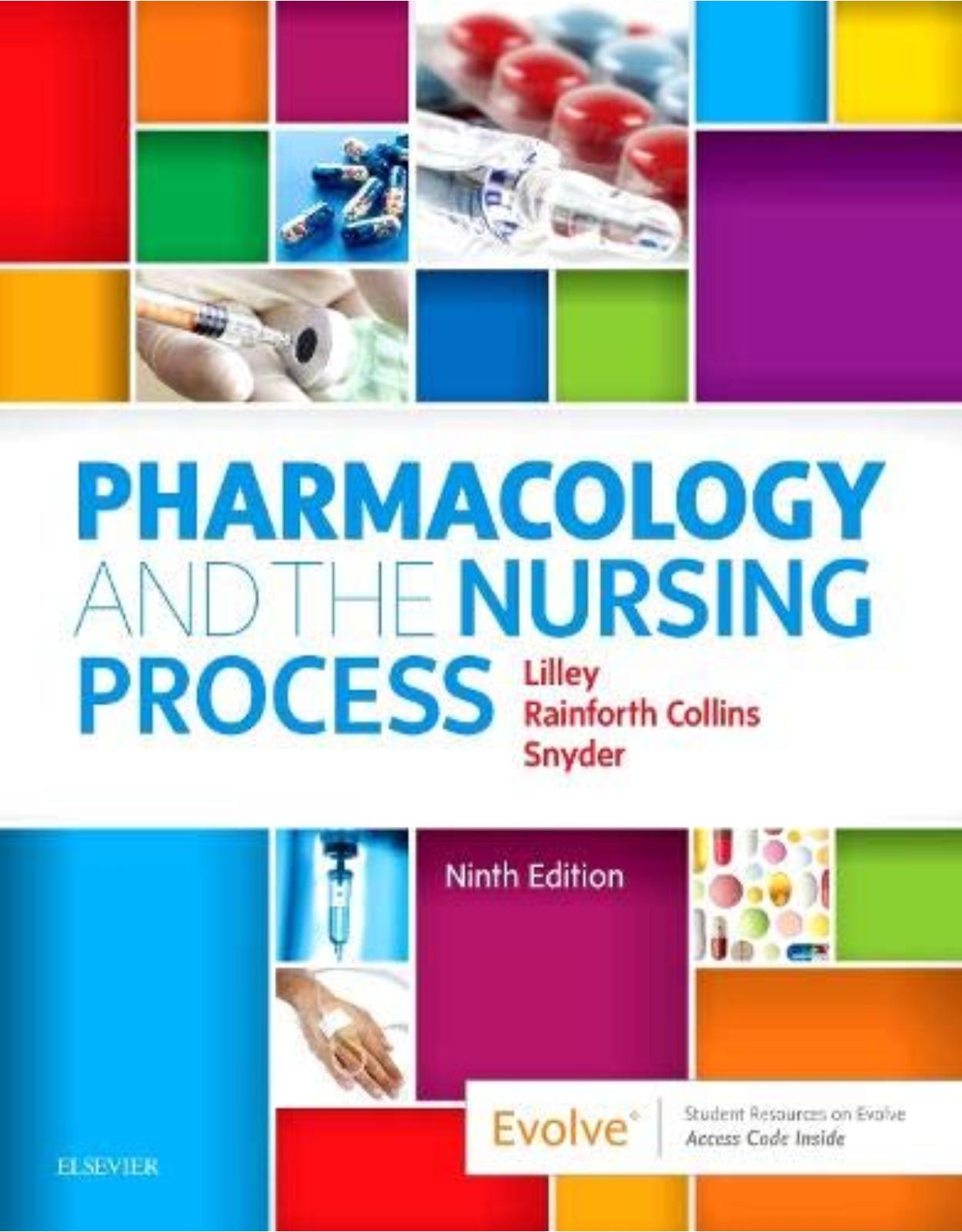
The Drug Recognition Guide, 2nd Edition
Livrare gratis la comenzi peste 500 RON. Pentru celelalte comenzi livrarea este 20 RON.
Disponibilitate: La comanda in aproximativ 4 saptamani
Autor: Mark Currivan
Editura: Wiley
Limba: Engleza
Nr. pagini: 128
Coperta: Paperback
Dimensiuni: 13.8 x 0.7 x 21.6 cm
An aparitie: 8 April 2021
Description:
The Drug Recognition Guide introduces an innovative method for recognising and categorising medications, enabling readers to easily identify the type and use of a generic drug by visually deconstructing its name. Through its creative use of colour-coded drug prefixes and suffixes, this pocket-sized guide makes generic drug names distinctive, logical, and easy to pronounce and remember. More than 700 drugs from over 200 different drug categories are catalogued and colour-highlighted--helping you understand what underlies a generic drug name.
Organised by class and use, the book’s ten chapters cover a comprehensive range of drugs, including chemotherapy and immunosuppressants, drugs that affect the cardiovascular and respiratory systems, drugs used to manage pain, treat infectious diseases, and many others. Each entry briefly summarises a particular class of drugs, describes the intended use of drugs within the class, and breaks down the “name stems” of individual drugs to reveal useful information and illustrate connections between chemically and therapeutically related medicines.
Presenting an original, easy-to-use approach to the complex subject of drug classification, this invaluable learning aid:
Provides a thorough yet accessible way for students and practitioners to increase their understanding of medications and their application
Helps students to clearly read and pronounce even the most difficult generic drug names
Highlights the letters in generic drug names to enable students to recognise drugs immediately
Explains who assigns a generic drug name and what the name represents
Includes an introduction to generic and proprietary drug names and design motifs
The Drug Recognition Guide is essential reading for nursing and medical students, pharmacy students and technicians, as well as nurse practitioners and trainee and junior doctors.
Table of Contents:
Drug names: generic/proprietary
Comparison of rINNs in English, French, Spanish, Portuguese and Italian
Drug names and design motifs
Information about the guide
References
1 Drugs that affect the gastrointestinal system
Aminosalicylates
Antispasmodics
Antimuscarinic antispasmodics
Direct‐acting smooth muscle relaxants
H2‐receptor antagonists
Laxatives
Proton pump inhibitors (PPIs)
References
2 Drugs that affect the cardiovascular system
ACE inhibitors
Alpha‐1 adrenoceptor blockers
Angiotensin receptor blockers
Beta‐blockers
Calcium channel blockers
Class I calcium channel blockers
Class II calcium channel blockers
Class III calcium channel blockers
Centrally‐acting antihypertensives
Diuretics
Loop diuretics
Thiazide diuretics
Potassium‐sparing diuretics and aldosterone antagonists
Osmotic diuretics
Endothelin receptor antagonists
Potassium channel activators
Renin inhibitors
Antiarrhythmics
Class I antiarrhythmics
Class II antiarrhythmics
Class III antiarrhythmics
Class IV antiarrhythmics
Class V antiarrhythmics
Cardiac glycosides
Nitrates
References
3 Drugs that affect blood coagulation and lipids
Anticoagulants
Direct factor Xa inhibitors
Direct thrombin inhibitors
Heparins
Heparinoids
Hirudin analogues
Prostaglandin analogues
Synthetic pentasaccharides
Vitamin K antagonists
Antiplatelets
Cyclo‐oxygenase (COX) inhibitors
Glycoprotein IIb and IIIa inhibitors
P2Y12 platelet receptor antagonists
Phosphodiesterase inhibitors
Fibrinolytics
Lipid‐regulating agents
Bile acid sequestrants
Cholesterol absorption inhibitors
Fibrates
Miscellaneous lipid‐regulating agents
MTP inhibitors
PCSK9 inhibitors
Statins (HMG CoA reductase inhibitors)
References
4 Drugs that affect the respiratory system
Respiratory disease drugs
Antimuscarinics
Beta‐2 agonists
Corticosteroids
Leukotriene receptor antagonists
Monoclonal antibodies
Phosphodiesterase type‐4 inhibitors
Xanthines
References
5 Drugs that affect the central and peripheral nervous system
Antiepileptic drugs
Antidepressants
Monoamine oxidase inhibitors (MAOIs)
Serotonin and/or noradrenaline reuptake inhibitors (SSRI, NRI, SNRI and SMS)
Tricyclic antidepressants (TCAs)
Miscellaneous antidepressants
Antipsychotics
First‐generation antipsychotics
Second‐generation antipsychotics
Second‐generation antipsychotics
Benzodiazepines
Non‐benzodiazepine sedatives
Cyclopyrrolones and imidazopyridines
Melatonin receptor agonists
Antihistamines
Antimuscarinics
Parkinson's disease drugs
Levodopa and DDI compounds
COMT inhibitors
Dopamine receptor agonists
Monoamine oxidase‐B inhibitors
Antimuscarinic antiparkinsonian drugs
Glutamate antagonists
References
6 Drugs used in the management of pain
Analgesics
Non‐opioid analgesics
Compound analgesics
Opioid analgesics
5HT‐1 agonists
Non‐steroidal anti‐inflammatory drugs (NSAIDs)
Enolic acid class NSAIDs
Acetic acid, propionic acid and fenamic acid class NSAIDs
Cyclo‐oxygenase (COX)‐2 inhibitors
References
7 Antiemetics: drugs used in the management of nausea and vomiting
Antiemetics
Analogues of histamine
Antihistamine antiemetics
Antimuscarinic antiemetics
Dopamine receptor antagonists
5HT‐3 receptor antagonists
Neurokinin‐1 receptor antagonists
Phenothiazines
References
8 Diabetes drug therapy and other medicines that affect the endocrine system
Insulins
Short‐acting insulins
Intermediate and long‐acting insulins
Biphasic insulins
Antidiabetic drugs
Alpha‐glucosidase inhibitors
Biguanides
Dipeptidylpeptidase‐4 inhibitors
Glucagon‐like peptide‐1 agonists
Meglitinides
Sodium‐glucose (linked) co‐transporter 2 inhibitors
Sulfonylureas
Thiazolidinediones
Bisphosphonates
Corticosteroids
Phosphodiesterase inhibitors
Prostaglandin analogues
References
9 Antimicrobials: drugs used to treat infectious diseases
Antibacterials
Aminoglycosides
Carbapenems
Cephalosporins
Compound antibiotics
Folic acid inhibitors
Lincosamides
Lipopeptides and glycopeptides
Macrocyclic antibiotics
Macrolides
Nitrofuran derivatives
Nitroimidazoles
Oxazolidinones
Penicillins
Quinolones
Rifamycins
Sulfonamides
Tetracyclines and glycylcyclines
Antifungals
Antivirals
Antiretrovirals
References
10 Chemotherapy and immunomodulatingagents
Chemotherapy
Alkylating agents
Antimetabolites
Cytotoxic antibiotics
Platinum compounds
Proteasome inhibitors
Protein (and tyrosine) kinase inhibitors
Taxanes
Topoisomerase‐inhibiting agents
Vinca alkaloids
Sex hormones and hormone antagonists
Immunomodulating agents
Analogues of thalidomide
Antiproliferative immunosuppressants
Calcineurin and ‘non‐calcineurin’ inhibiting immunosuppressants
Monoclonal antibodies
References
Index
Index
End User License Agreement
| An aparitie | 8 April 2021 |
| Autor | Mark Currivan |
| Dimensiuni | 13.8 x 0.7 x 21.6 cm |
| Editura | Wiley |
| Format | Paperback |
| ISBN | 9781119689805 |
| Limba | Engleza |
| Nr pag | 128 |
-
3,27700 lei 2,64300 lei










Clientii ebookshop.ro nu au adaugat inca opinii pentru acest produs. Fii primul care adauga o parere, folosind formularul de mai jos.